
Are you looking to add some extra charm and beauty to your garden? One way to do that is by creating garden borders. Garden borders can add structure and definition to your garden while also allowing you to showcase your favorite plants. But which are the best plants for garden borders?
Below are some of the best plants for garden borders:
1. Lavender
2. Salvia
3. Larkspur
4. Hosta
5. Daylily
6. Creeping Thyme
7. Dahlia
8. Catnips
9. Coral Bells
These plants are great options for garden borders because they come in various colors, heights, and textures, allowing you to create a unique and diverse garden border. Additionally, many of these plants are perennials, meaning they will return year after year, making them an excellent long-term investment for your garden.
First, let’s look at:
Factors to Consider When Choosing Plants for Garden Borders
When choosing plants for your garden borders, there are several factors to consider:
- Climate: Choose plants that are well-suited to your climate. This will ensure they thrive in your garden and require less maintenance.
- Sunlight: Different plants have different sunlight requirements. Be sure to choose plants that receive the appropriate sunlight for your garden.
- Soil: Some plants prefer acidic soil, while others prefer alkaline soil. Make sure you choose plants that are well-suited to the soil conditions in your garden.
- Height and Width: Consider the height and width of each plant when choosing plants for your garden borders. You want to select plants that complement each other and create a cohesive look.
Best Plants for Garden Borders
If you’re looking to create a vibrant and colorful garden border, here are some of the best plants to consider:
1.Lavender (Lavandula spp.)
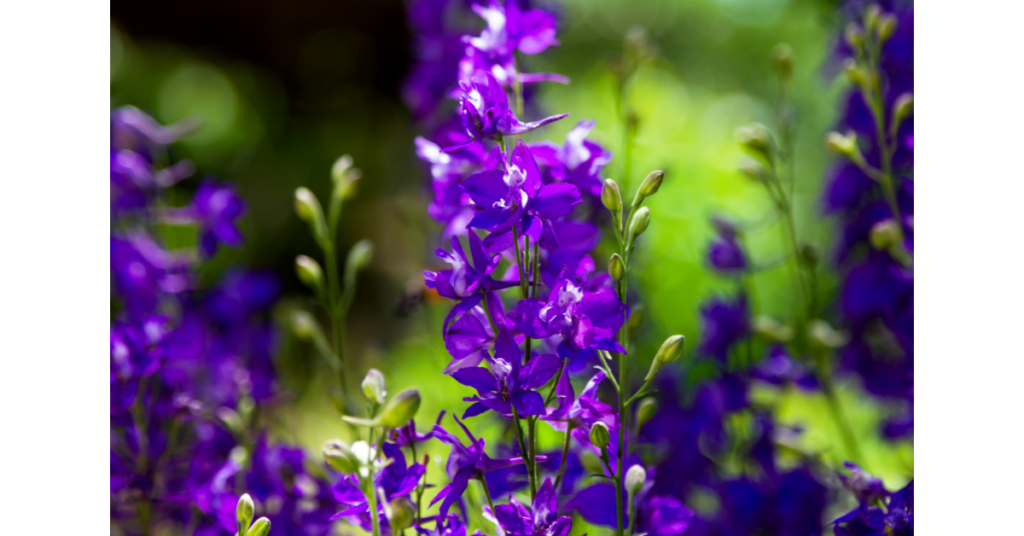
Lavender, with its enchanting fragrance and vibrant purple flowers, is an excellent choice for garden borders. This versatile plant adds a touch of elegance to any landscape. Not only does lavender attract pollinators like bees and butterflies, but it also repels pests, making it a natural and eco-friendly option.
Consider planting different varieties of lavender, such as English lavender (Lavandula angustifolia) or French lavender (Lavandula stoechas), to create a visually striking border that blooms from spring to summer.
2.Salvia (Salvia spp.)
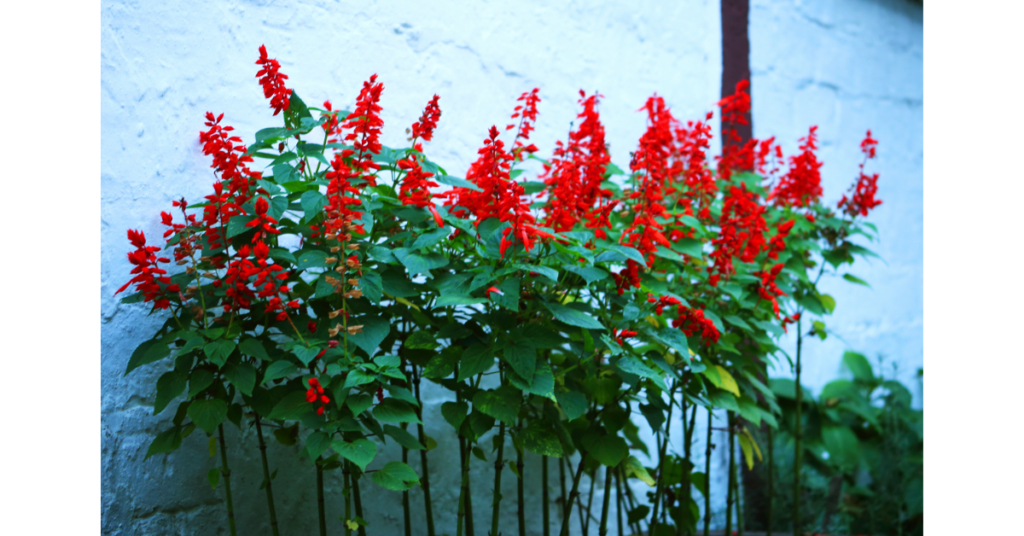
Salvia plants are another great option for garden borders. They come in various colors, from vibrant reds and pinks to cool blues and purples. Salvia ‘Amistad’ is a standout favorite, with its brilliant shade of midnight purple that glows in the autumn sunshine.
Most salvias are prolific flowerers, blooming continuously from summer through fall. They are also easy to propagate so you can plan and replace any winter losses with new plants.
3.Larkspur (Delphinium spp.)
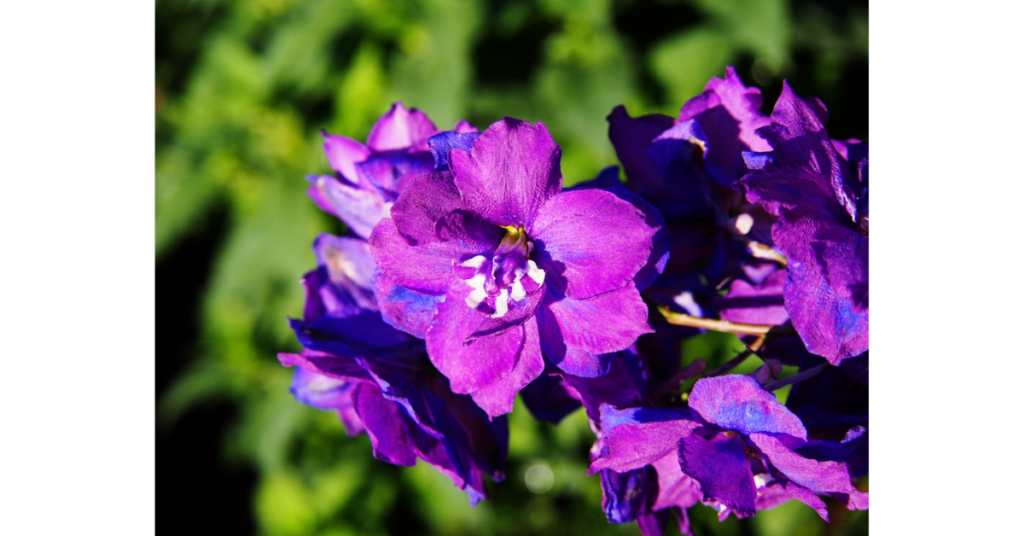
You can add vertical interest to your garden border with larkspur plants, which feature tall spires of delicate flowers in shades of blue, purple, white, and pink. These annual plants are easy to grow from seed and bloom in early summer, making them a great complement to other summer-blooming plants in your garden border.
4.Hosta (Hosta spp.)
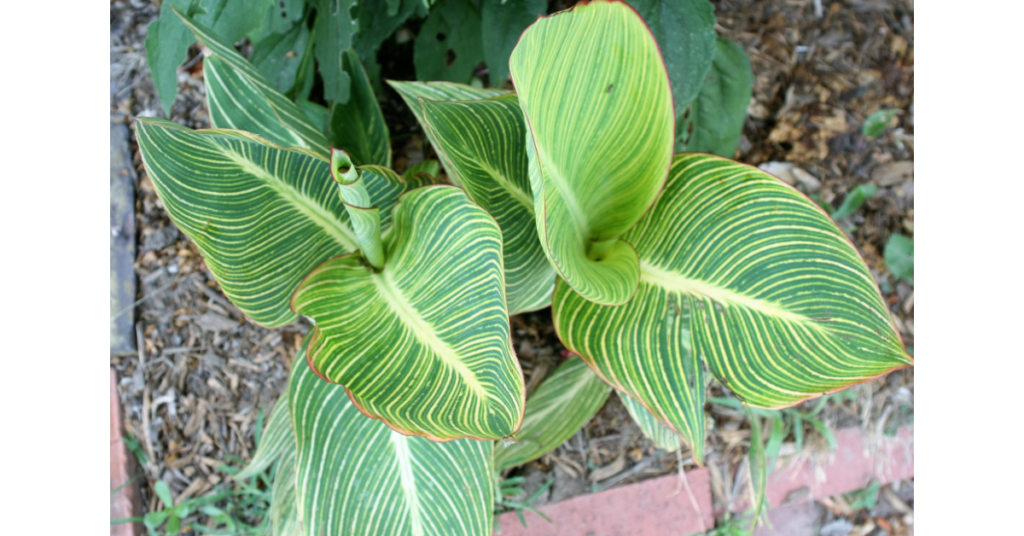
For a more foliage-focused garden border, hostas are an excellent choice. These hardy perennials feature large, lush leaves in shades of green, blue, and variegated patterns.
Hostas are well-suited for shaded areas and add texture and color to your garden border. They also produce delicate flowers in late summer.
5.Daylily (Hemerocallis spp.)
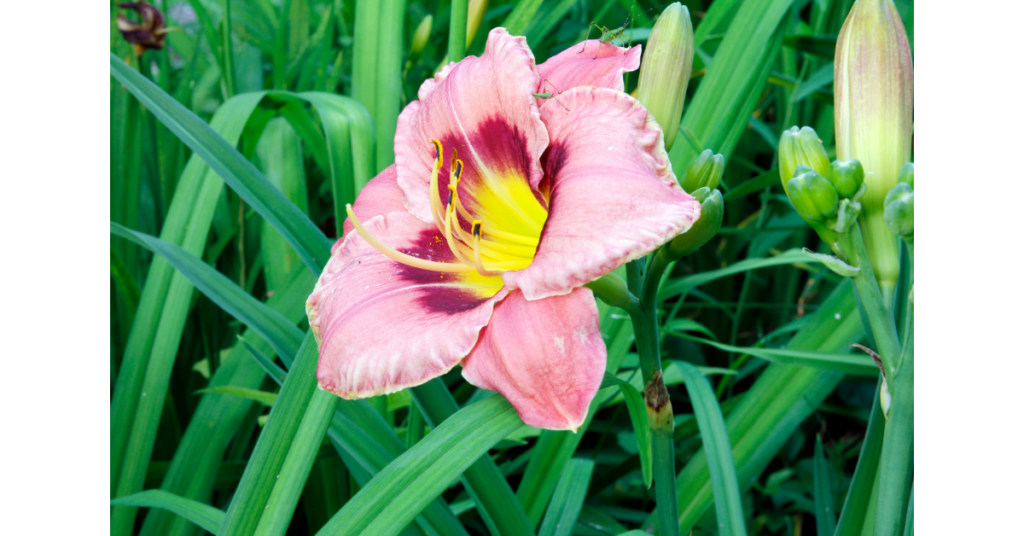
There are many varieties of daylilies to choose from, making them an incredibly versatile plant for garden borders. They come in various colors and sizes, from little miniatures to tall towering plants.
Daylilies are also easy to care for and are drought tolerant, making them an excellent option for low-maintenance garden borders. They bloom in mid to late summer, with each flower only lasting a day but producing many blooms over several weeks.
6.Creeping Thyme (Thymus serpyllum)
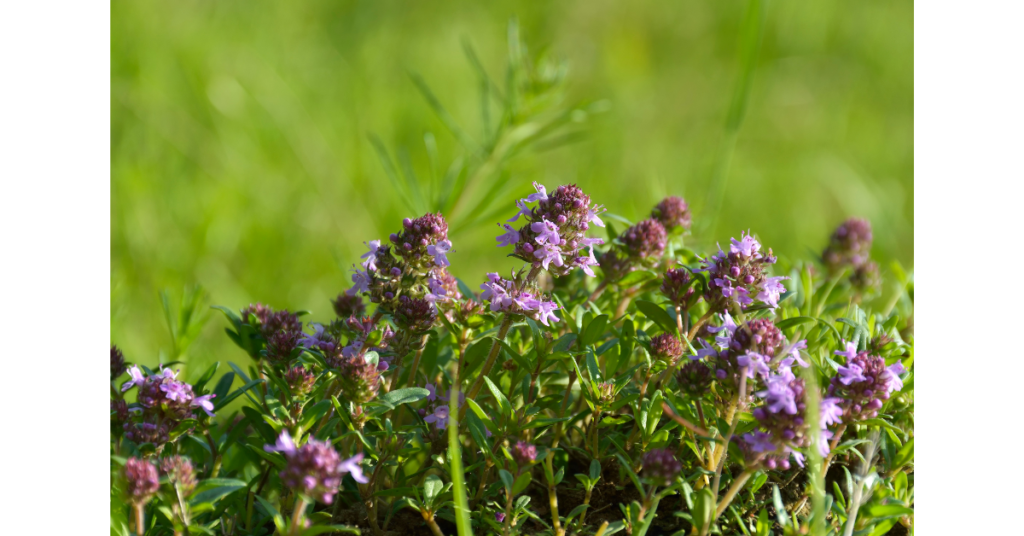
Creeping thyme is a low-growing, ground-cover plant that produces delicate purple flowers in early summer. It’s an excellent choice for garden borders as it’s incredibly hardy and drought-tolerant, perfect for sunny and rocky areas. It also features a lovely fragrance and can be a natural insect repellent.
7.Dahlia (Dahlia spp.)
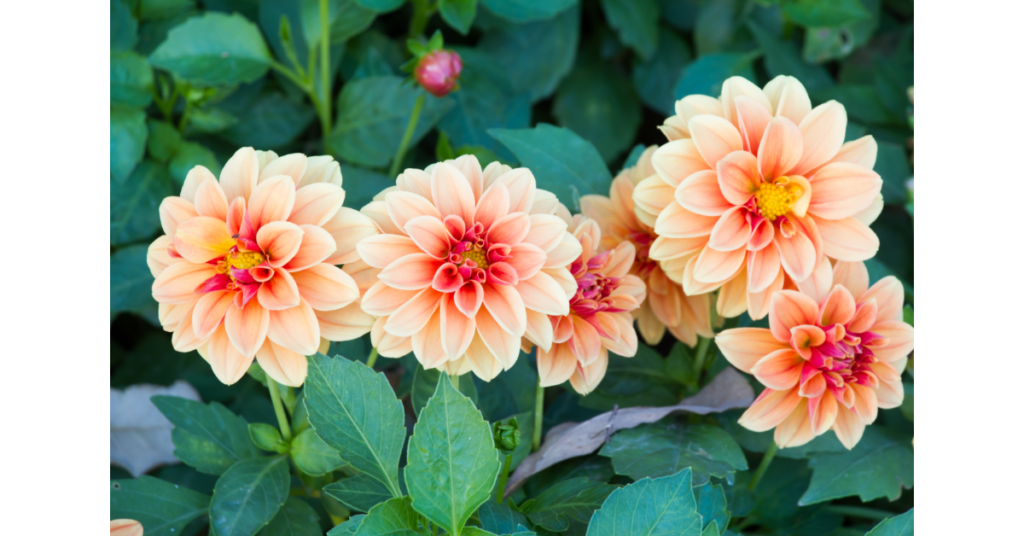
Many gardeners love dahlias for their bold and beautiful blooms in various colors and shapes. They are perfect for adding a splash of color to garden borders in late summer and early fall.
With the proper care, dahlias can produce blooms from mid-summer until the first frost. They prefer full sun and rich, well-draining soil.
8.Catnips (Nepeta spp.)
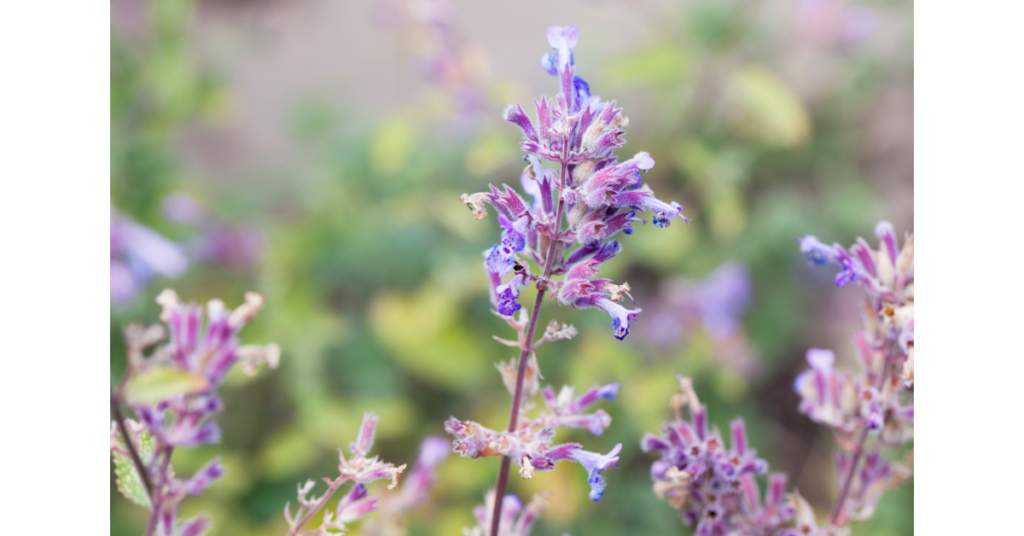
Catnips, or Nepetas, are low-maintenance plants that can add beauty and functionality to your garden border. They produce clusters of blue, lavender, or pink flowers that bloom from summer to fall, and their aromatic foliage can also serve as a natural repellent for pests like mosquitoes and flies.
Catnips are drought tolerant and attract pollinators like bees and butterflies, making them a great addition to any garden border.
9.Coral Bells (Heuchera spp.)
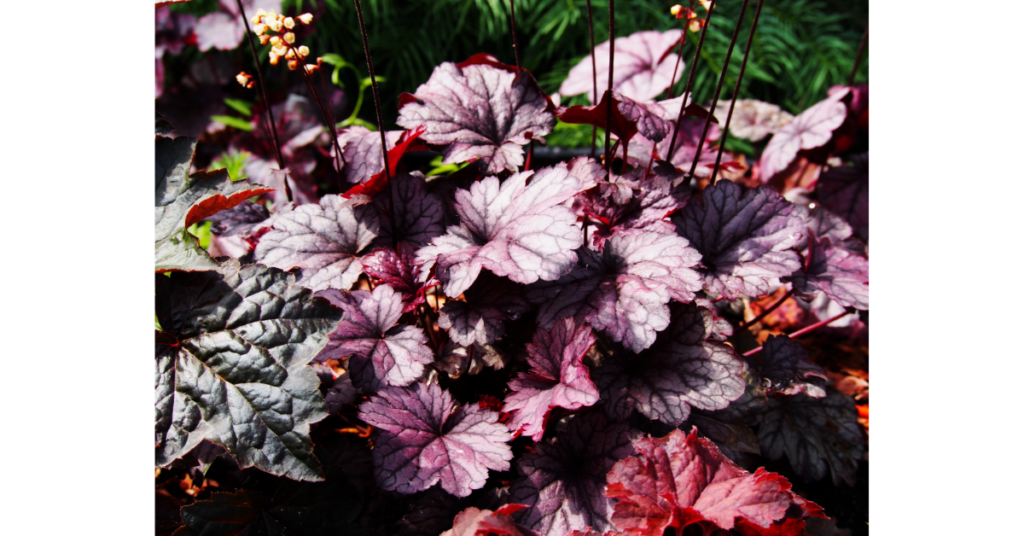
The versatile Coral bells are a popular choice for garden borders due to their stunning foliage, which ranges from deep purples to vibrant greens. These perennials produce delicate flowers on tall stalks that bloom in late spring to early summer. Coral bells also tolerate shade, making them an excellent choice for border areas with less sunlight.
Overall, there are many great options for plants to use in your garden borders. You can choose plants that will thrive in your specific garden environment by considering factors such as climate, sunlight, soil, height, and width.
Design Tips for Garden Borders
Now that you know some of the best plants for garden borders, here are a few design tips to help you create a visually appealing and cohesive edge:
Consider Height and Layering
When planning your garden border, think about the heights of the plants and how they will complement each other. Place taller plants towards the back of the border, gradually decreasing in size towards the front. This layering effect adds depth and visual interest to your garden.
Mix Colors and Textures
Feel free to play around with various textures and colors. Combine plants with contrasting foliage, flower colors, and bloom times to create an eye-catching display throughout the seasons. This mix of colors and textures will add visual appeal and keep your garden border looking vibrant.
Create a Focal Point
Introduce a focal point in your garden border to draw attention and create a sense of balance. This could be a unique plant, a decorative element like a sculpture or birdbath, or a beautifully designed garden structure. A focal point adds interest and serves as a centerpiece for your garden border.
Incorporate Evergreens
To maintain visual interest year-round, include evergreen plants in your garden border. These plants provide structure and color even during winter when other plants may be dormant. Evergreens are a backdrop for seasonal plants and ensure your garden border looks appealing throughout the year.
You’ve Got The Green Thumb!
Garden borders can transform your outdoor space, adding beauty, structure, and a touch of nature to your garden. You can create a visually stunning and inviting garden by choosing the right plants for your garden borders and incorporating design principles.
Whether you prefer vibrant colors, delicate textures, or a mix of both, the best plants for garden borders mentioned in this will help you create a beautiful and unique garden border that you can enjoy year after year.
Remember to consider factors like climate, sunlight, soil conditions, and height when choosing plants for your border, and don’t be afraid to mix and match colors, textures, and bloom times to create an eye-catching display. With some planning and creativity, you can enhance your outdoor space and create a garden border to show off proudly.
FAQs (Frequently Asked Questions)
What are the best edging plants?
In terms of the ideal border plants for gardens, there are several options. The most popular choices include lavender, salvia, larkspur, hosta, daylily, creeping thyme, dahlia, catnips, and coral bells.
Ultimately, the best edging plants will depend on your specific garden environments, such as sunlight, climate, and soil conditions, as well as your personal preferences and design goals. It’s always a good idea to research and consult a gardening expert to determine the best plants for your garden border.
What can I plant around the edge of my garden?
There are many great options for plants to use around the edge of your garden. Some of the best plants for garden edges include border perennials like hostas, daylilies, and coral bells; ground cover plants like creeping thyme and sweet woodruff; and colorful annuals like petunias, impatiens, and marigolds.
The best plants for your garden edge will depend on your specific garden conditions and design preferences. Consider sunlight, soil conditions, and height when choosing plants that thrive in your garden border. With some planning and creativity, you can create a beautiful, eye-catching garden edge that enhances your outdoor space.
How do you make a cheap garden border?
If you’re on a budget but still want to create a beautiful garden border, there are several ways to do so without breaking the bank. Here are some tips for making a cheap garden border:
#1. Use inexpensive materials: Rather than purchasing expensive pavers or edging, consider using natural materials like rocks or gravel to create a border.
#2. Plant perennials: Invest in hardy perennials that will return year after year rather than purchasing expensive annuals that must be replaced each season.
#3. Start from seed: Growing plants from seed is a cost-effective way to start your garden. You can buy seed packets for a fraction of the cost of mature plants.
#4. Divide existing plants: Consider dividing them and spreading them along your garden border if you have existing plants. This way, you can save money on buying new plants.
#5. Use repurposed materials: Upcycle old items like bricks or pallets to create a unique and inexpensive garden border.
How do you make a landscape border?
Making a landscape border involves several steps, including planning, selecting materials, and installation. Here is a guide to help you make a landscape border:
- Plan your border: Decide on the location and size of your landscape border and consider factors like sunlight, soil type, and drainage. Determine the shape of your edge, whether it’s a straight line or a curved design.
- Select materials: Choose materials based on your budget, durability, and design preference. Common materials for landscape borders include bricks, stones, pavers, wood, or metal.
- Prepare the ground: Remove any grass, weeds, or debris from the area where you plan to install your border. Level the ground as necessary to ensure a stable base for your materials.
- Install your border: Lay out your selected materials along the border design and secure them. Use mortar or concrete to ensure the materials for a more permanent installation.
- Add plants: Once your landscape border is installed, add plants that thrive in your specific environment. Choose plants that complement your design and add color and texture to your edge.
With careful planning and execution, creating a landscape border can be a fun and rewarding project that enhances the beauty of your outdoor space.